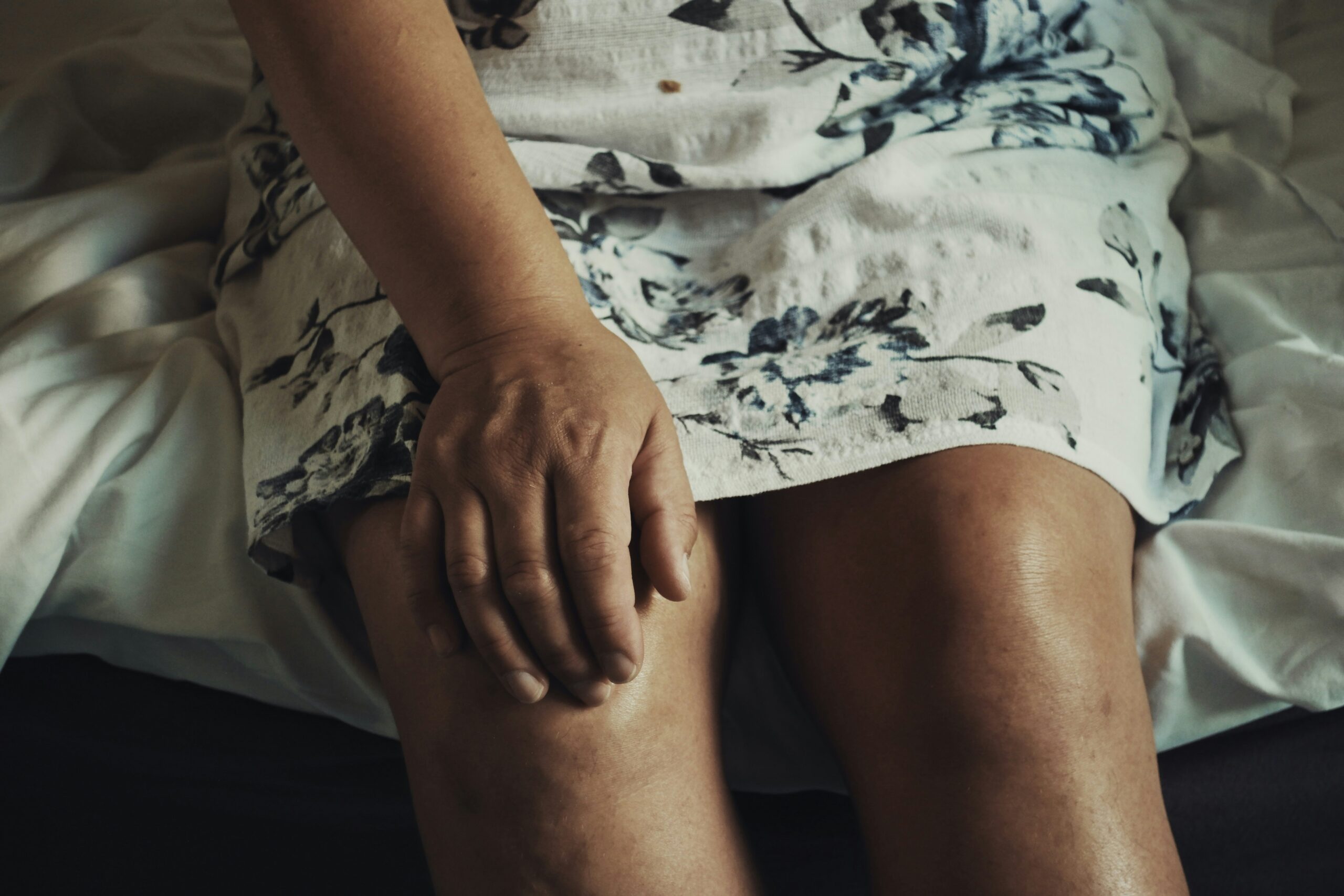It is a common concept that the knee is one of the most complex parts of the human body. People refer to it as the “definitive joint” because of its size and complexity. The knee acts as a hinge, enabling the hip to move away from the body and the body to extend and bend.
Because of their flexibility, people are able to keep their balance when standing, walking, stretching, or running.
The shape helps to a certain degree but also makes it more prone to knee injuries or deterioration over time. The equipment is subject to high stress every day due to its ability to hold one's weight, which consequently may lead to long-term stress, degenerative diseases, and mistakes.
Knee injuries are unfortunately common due to their almost irrepressible nature and their ability to drastically interfere with everyday life. Knee problems can be a real issue for a lot of people, especially elderly individuals and young athletes who are just starting.

The knee is much more than a simple pivot joint. The three main bones of the knee joint are the femur, the knee, and the tibia. The word “thigh bone” is commonly used to describe the femur. It is the longest and strongest bone in the body. It is a part of the upper areas of the joint, along with other bones. The tibia is the main bone that distributes the load of the body's weight. The patella is a small round bone in front of the joint and provides a protective shield. The joint is stabilized by many muscles connecting the knee bones.
The four main muscles are crucial in the following situations. The posterior cruciate ligament (PCL) enables the knee to move backward, while the anterior cruciate ligament (ACL) enables the knee to move forward. The mobility of the knee is a function of the correct coordination of both muscles. The posterior cruciate ligament![]() (PCL) is the most common sports injury. The medial collateral ligament (MCL) and lateral collateral ligament (LCL) are the ones that strengthen the knee in the outside direction.
(PCL) is the most common sports injury. The medial collateral ligament (MCL) and lateral collateral ligament (LCL) are the ones that strengthen the knee in the outside direction.
In the knee joint, the meniscus is a cartilage part that has two portions. These shock absorbers act as impact preventers, and hence, the tibia and femur are kept apart due to their C-shaped design. Stress is transmitted through the bones, hence they are able to slide over each other without compressing against one another. Walking is similar to putting one bone against another in their absence. The knee can perform lateral movement due to the presence of the lubricated cartilage that keeps the bones from rubbing against each other.
The quadriceps are in front of the knee, while the hamstring muscles are behind it. The knee is held and surrounded by many muscles. Several muscles work to move the body, and these are the main elements of the body.
The knee joint's fundamental errand is to make the development of the pivot joint less demanding. This operation involves the appendage twisting both ways. It is very straightforward to get it that matter. Apart from flexing, the knee contains several other functions as well. Among the developments, bouncing, abseiling, and cadenced developments are the foremost exact and controlled developments. That's due to the reality that they are the ones who offer assistance to the body, disseminate weight equally, and stabilize it.
The knee joints stretch much during exercises like sprinting, jumping, etc. Think of the following:
Give a thought to your strolling by the lower legs carrying 1.5 times the weight of your body. Think about the reality that you are just taking part in this action. Three control surges have happened for you. The jump is precisely one foot tall. The knee joint is superior at dispersing weight equitably since the meniscus, cartilage, and tendons cooperate. This activity diminishes the likelihood of the joint being harmed amid typical exercises.
The knee is the portion of the body primarily capable of keeping the body in adjust. The joint is the one deciding to calculate that impacts the adaptability of the surface no matter its smoothness. The components must be in total harmony and adjust for the framework to operate appropriately. Adjustment and control can be exceptionally difficult when the knees are powerless or inflamed, making the lightest assignments extremely painful and troublesome.

The knees are quite strong, but they are not completely immune to injuries. The joint may sometimes be immobilized, and thus, it is difficult to move, which causes many dangers and complications. The anterior cruciate ligament![]() (ACL) and the medial collateral ligament are the most frequently injured ligaments in league competitions. The majority of the time, these injuries are caused by an abrupt twist or impact. Anterior cruciate ligaments (ACLs) are often injured in athletes who participate in sports like soccer, basketball, and football due to the requirement for sudden changes of direction and stopping. Surgery is most likely the treatment needed to regain mobility if the anterior cruciate ligament (ACL) gets damaged.
(ACL) and the medial collateral ligament are the most frequently injured ligaments in league competitions. The majority of the time, these injuries are caused by an abrupt twist or impact. Anterior cruciate ligaments (ACLs) are often injured in athletes who participate in sports like soccer, basketball, and football due to the requirement for sudden changes of direction and stopping. Surgery is most likely the treatment needed to regain mobility if the anterior cruciate ligament (ACL) gets damaged.
Most people who have been injured develop a ruptured meniscus. It may result from a sudden change or a gradual decline over time. These injuries may cause emphysema, agony, and limitation. After an accident, teenagers and toddlers are more likely to develop a ruptured meniscus. Conversely, tension and poor joint health may cause degenerative injuries in old people.
Moreover, old people are at a greater risk of having defective joints, which are also short of aging. Progressive loss of cartilage protection is caused by the benign joint disease and its symptoms. Pain, swelling, and stiffness occur when bones that are in close proximity lack needed cartilage. Rheumatoid arthritis is a different type of arthritis. It is mainly an immune response to the knee joint edema. As a result, the joint barrier fails, and the area swells.
A precise conclusion of a knee issue, whether it may be a brief or long-term issue such as torment or instability, is fundamental. The complete patient history, besides a careful physical examination, the essential roadmap of the method, and the ensuing activities are based on these discoveries. The specialist will analyze the basic reasons for any Knee torment, in case the person includes a history of knee damage, and whether the developments are excruciating.
X-ray is the foremost common way to analyze knee issues. Bone checks are valuable for separating between degenerative changes like osteoarthritis, breaks, and separations due to their capability of visualizing bones as well. X-rays can some of the time show the nearness of joint versatility limitations or sporadic bone development. Both of these side effects are demonstrative of conceivable cartilage degeneration.
Magnetic resonance imaging (MRI) uses an attractive field and radio waves to look at the knee's tendons, ligaments, and cartilage. The innovation behind our MRI checks has progressed so much that specialists can see things that X-rays cannot identify. An MRI could be an exceptionally critical imaging device on the off chance that it is suspected that a meniscus or front cruciate tendon harm has occurred. It performs a nitty gritty check-up to assist in choosing the correct treatment.
Ultrasound may be a strategy that people usually relate with pregnancy, but it can moreover be connected to diagnose knee issues. The most excellent strategy for identifying tendinitis, bursitis, and liquid buildup is knee ultrasound in real-time. The gadget can too be used to perform injections that are secure, simple, and cheap.
Arthroscopy can be a valuable method when imaging isn't accessible to assist with the conclusion. Usually a negligibly obtrusive prepare, in which a little camera is embedded into the knee bone to empower the specialist to watch the joint in real-time. Arthroscopy can analyze and settle both tendon damage and knee damage. The specialist had the capacity to recuperate the harm with just one operation, in spite of the fact that at to begin with look he may have missed it.
Knee swelling could be a consequence of the presence of fluid due to the accumulation of it, thereby requiring joint lavage. The joint is drained by catheter, and the fluid is analyzed. This test can detect inflammatory arthritis, gout, and other diseases. Inflamed markers, crystals, or microorganisms in the fluid are the probable causes.

Knee pain is manageable by rest, medication, or surgical intervention. The manner in which a problem is resolved is contingent upon its severity and the category where it belongs. Most of the times, the best way is to use a combination of treatments.
Resting the knee and avoiding the performance of strenuous activities are the simplest ways to help the situation. Such injured or overworked individuals may benefit from getting help and avoiding activities with a high impact. A brace or joint support can also be very handy as they help to immobilize the injured area and give it stability.
This physical therapy is generally used as a remedy for knee problems. The knees can be made stronger, and tension can be released by strengthening the quadriceps and hamstrings. The main goal of PT is to develop the patient's ability to move, flexibility, and stamina. In the case of physical therapy, ultrasonic vibrations can be used to increase the speed of the healing process, decrease the pain and swelling, and help the patients live an active lifestyle.
Medications are among those taken by people who want to get relief from knee pain and stiffness. Nonsteroidal anti-inflammatory drugs (NSAIDs)– with ibuprofen being the most effective drug for reducing swelling and pain–are the best medications for the treatment of joint pain. Acute joint edema may be stabilized using corticosteroids; however, this effect is of short duration. Even though these injections may have some negative side effects in the long run, they are still used for the treatment of osteoarthritis and bursitis.
Surgery is the last solution when all other medical interventions have failed. The kind of surgery is decided according to the type of problem and the conditions involved. Usually, surgery is the treatment of choice if a person suffers from an ACL injury. A damaged joint is repaired using tissue transplantation from the patient or a volunteer.
Arthroscopy allows the quick removal or repair of meniscal tissue. The arthroscope is a device pushed through small incisions into the joint to carry out the procedure. Surgeons after examining the injury can choose whether to repair the meniscus or to remove the damaged part. That will depend on the extent of the injury and its location. Arthroscopy is even more effective than surgery for newly developed problems.
During surgery, a graft of either a patellar tendon or hamstring tendon is used to replace an anterior cruciate ligament (ACL) that has been torn. This operation is among the choices for most athletes who wish to resume their sporting or physical activities. Some individuals may need physical therapy to restore knee function, which may take several months.
A total knee replacement![]() may be the only option in cases of advanced degenerative diseases, such as severe osteoarthritis, that have not been treated. Prostheses are used to replace the damaged components of the knee. Although this treatment is effective in increasing mobility and reducing pain, it requires a long period of rehabilitation and surgery.
may be the only option in cases of advanced degenerative diseases, such as severe osteoarthritis, that have not been treated. Prostheses are used to replace the damaged components of the knee. Although this treatment is effective in increasing mobility and reducing pain, it requires a long period of rehabilitation and surgery.
Autologous chondrocyte implantation (ACI) and microfractures are not commonly used to treat the cartilage. These are not the only methods to treat it. The techniques make it possible for young people to regrow a cartilage patch from a small injury. These techniques are suitable for the people who opt for cartilage preservation.
Corticosteroid injection enhances therapy by relieving pain and edema. Inflammation-associated diseases like osteoarthritis and rheumatoid arthritis may be effectively treated. When these methods are employed, the joint, as well as the surrounding tissues, are at risk of damage due to repeated injections.